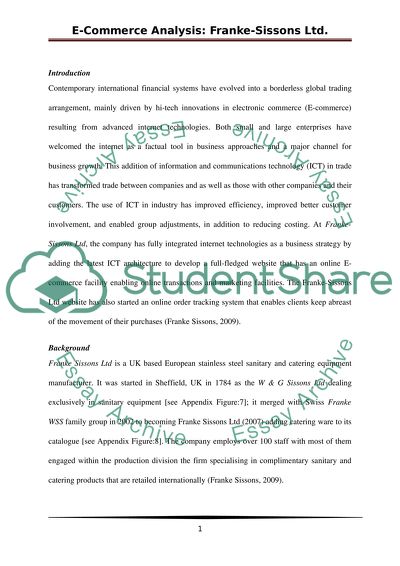Cite this document
(“Electronic Commerce (Frank Sissons LTD) Essay Example | Topics and Well Written Essays - 4000 words”, n.d.)
Electronic Commerce (Frank Sissons LTD) Essay Example | Topics and Well Written Essays - 4000 words. Retrieved from https://studentshare.org/miscellaneous/1564320-electronic-commerce-frank-sissons-ltd
Electronic Commerce (Frank Sissons LTD) Essay Example | Topics and Well Written Essays - 4000 words. Retrieved from https://studentshare.org/miscellaneous/1564320-electronic-commerce-frank-sissons-ltd
(Electronic Commerce (Frank Sissons LTD) Essay Example | Topics and Well Written Essays - 4000 Words)
Electronic Commerce (Frank Sissons LTD) Essay Example | Topics and Well Written Essays - 4000 Words. https://studentshare.org/miscellaneous/1564320-electronic-commerce-frank-sissons-ltd.
Electronic Commerce (Frank Sissons LTD) Essay Example | Topics and Well Written Essays - 4000 Words. https://studentshare.org/miscellaneous/1564320-electronic-commerce-frank-sissons-ltd.
“Electronic Commerce (Frank Sissons LTD) Essay Example | Topics and Well Written Essays - 4000 Words”, n.d. https://studentshare.org/miscellaneous/1564320-electronic-commerce-frank-sissons-ltd.


